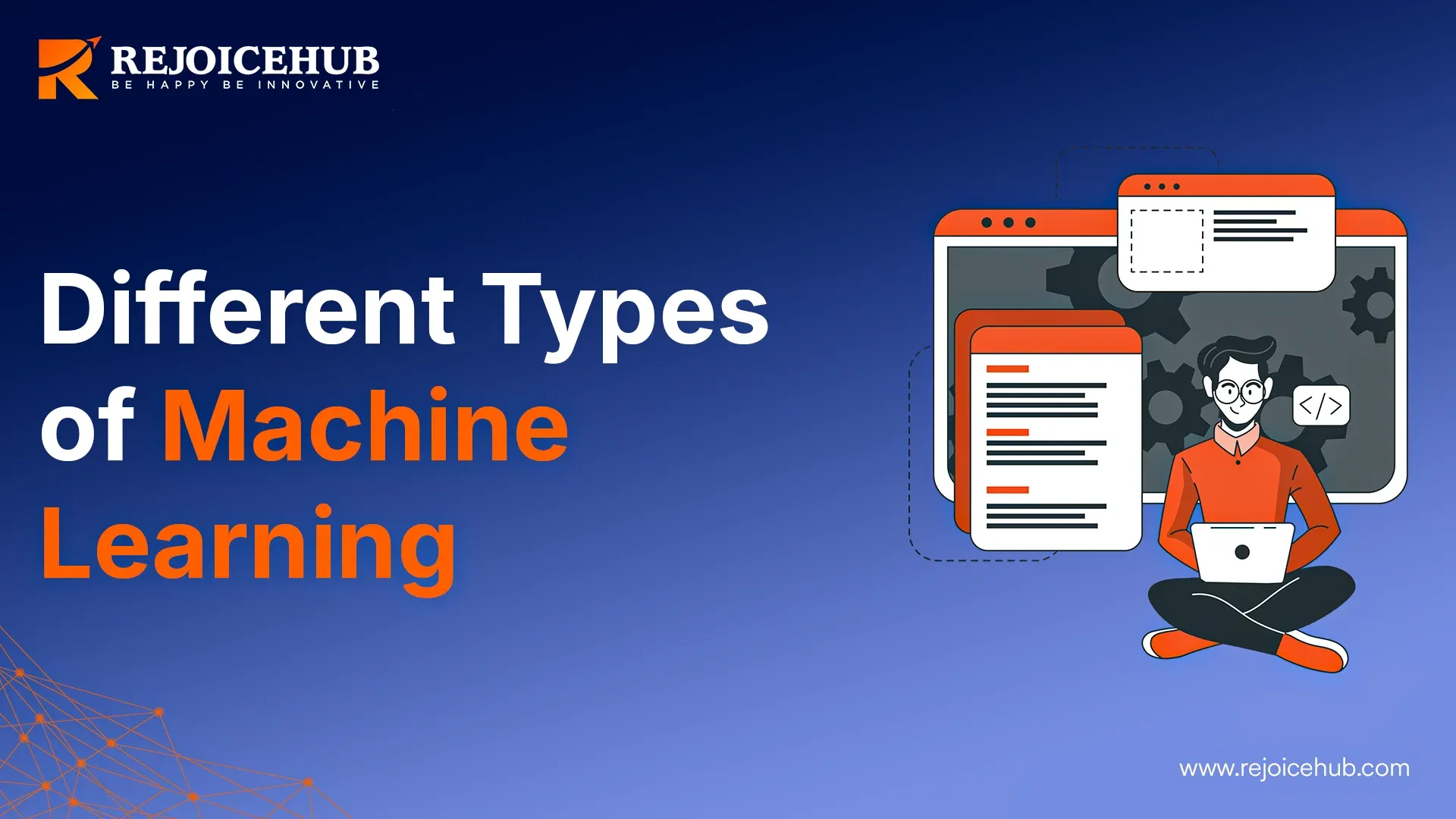
Machine learning is changing how the world works. It powers personal assistants and self-driving cars. Many people find it hard to understand. This guide explains the basics in simple terms. It also shows why each type is important. Take your time to learn and make sense of it.
Quick Summary
Wondering what’s in there? First, we’ll define machine learning in simple terms. We will also explore machine learning types, including supervised, unsupervised, semi-supervised, and reinforcement approaches. Each has its own advantages and disadvantages. By the end, you’ll learn how these method shape everything from spam filters to stock forecasts. Enjoy.
What is Machine Learning?
The machine learning is a part of artificial intelligence where systems learn patterns from data to make predictions or decisions on their own. They find trends, build models, and adjust based on real-world feedback. Over time, these models get better at handling tasks. In our daily lives, ML powers things like recommendations, facial recognition, and automatic translations. By giving algorithms large amounts of data, we let them find connections we might not see. This turns raw information into useful insights, and it’s how modern software grow so quickly.
1. Supervised Machine Learning
Supervised learning is like teaching a student with clear examples and answers. It starts with labeled data, where each piece comes with the “right” answer. The algorithm tries to predict the outcome and checks if it got it right. If not, it adjusts and tries again. Over time, it gets better at understanding patterns and can make accurate guesses even with new data. This method is behind email spam filters, medical tests, and even predicting stock prices. It’s like guiding someone step by step until they can confidently solve problems on their own.
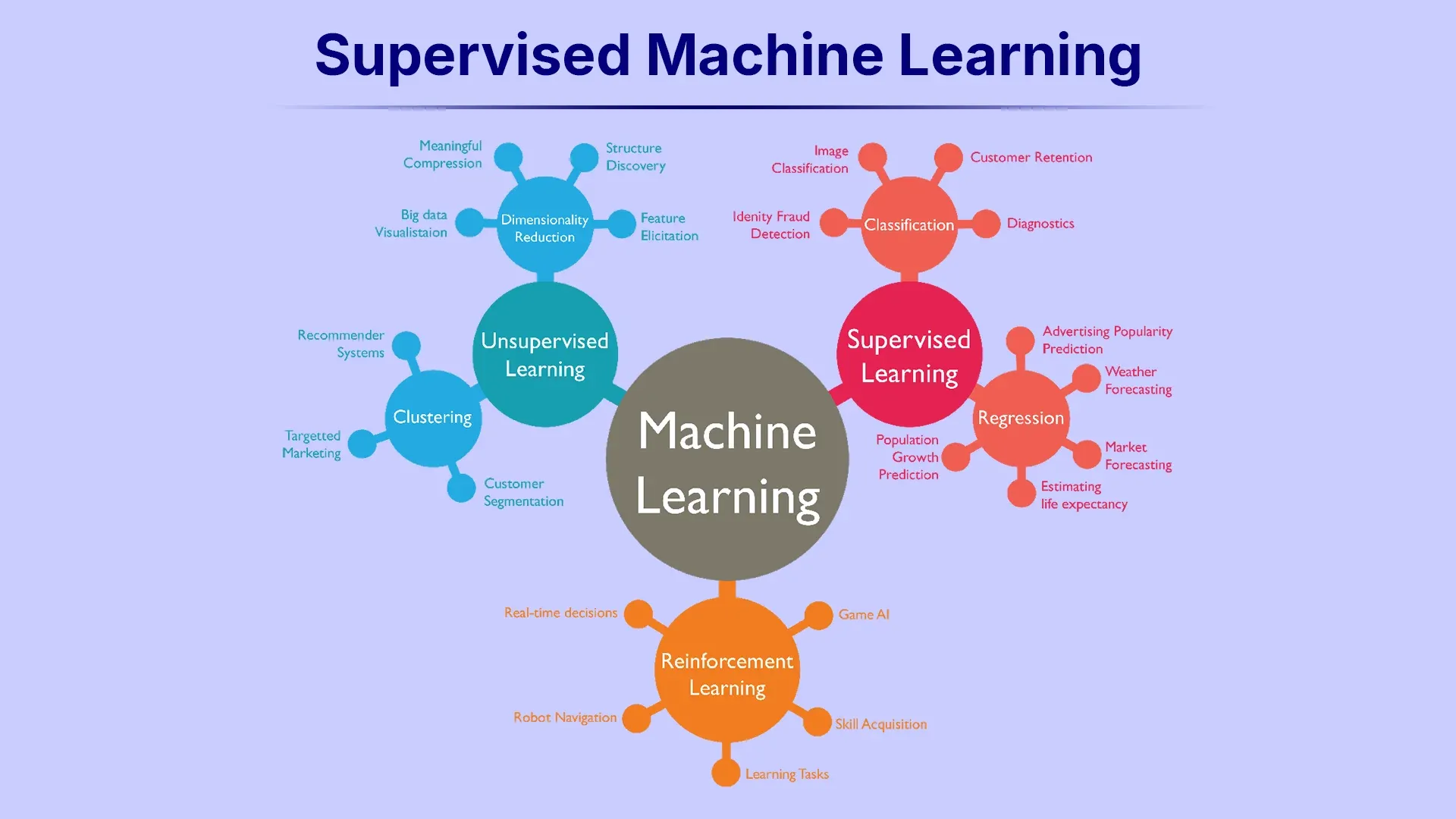
Categories of Supervised Machine Learning
- Classification: When outputs belong to distinct classes (like “spam” vs. “not spam”).
- Regression: When the goal is to predict continuous values (like house prices).
Both methods use labeled datasets to learn. Classification deals with sorting things into categories, like spam or not spam. Regression, on the other hand, works with numbers, predicting values like house prices or temperatures. In both cases, the algorithm improves over time by learning from its mistakes and reducing errors with each attempt.
Advantages of Supervised Machine Learning
- Clear, labeled data makes training straightforward.
- Predictions can be highly accurate with enough quality examples.
- Ideal for tasks like email filtering or credit scoring.
- Easy to evaluate performance because correct labels are known.
- Robust for many real-world applications where data labeling is feasible.
Disadvantages of Supervised Machine Learning
- Requires extensive labeled data, which can be costly or time-consuming to gather.
- Overfitting may occur if the model memorizes training examples rather than generalizing.
- Limited by the scope of provided labels.
- Not always flexible for rapidly changing environments.
- Might struggle with unseen categories or completely new scenarios.
2. Unsupervised Machine Learning
Unsupervised learning deals with data that has no predefined labels. Here, the model uncovers hidden patterns or structures on its own. It groups similar items or detects unusual outliers, providing insights you may not have noticed. Common tasks include clustering customers with similar buying habits or discovering unknown data groupings. It’s like handing a jigsaw puzzle to someone without showing them the final picture. The algorithm figures out how pieces might fit together, revealing meaningful connections in the process.
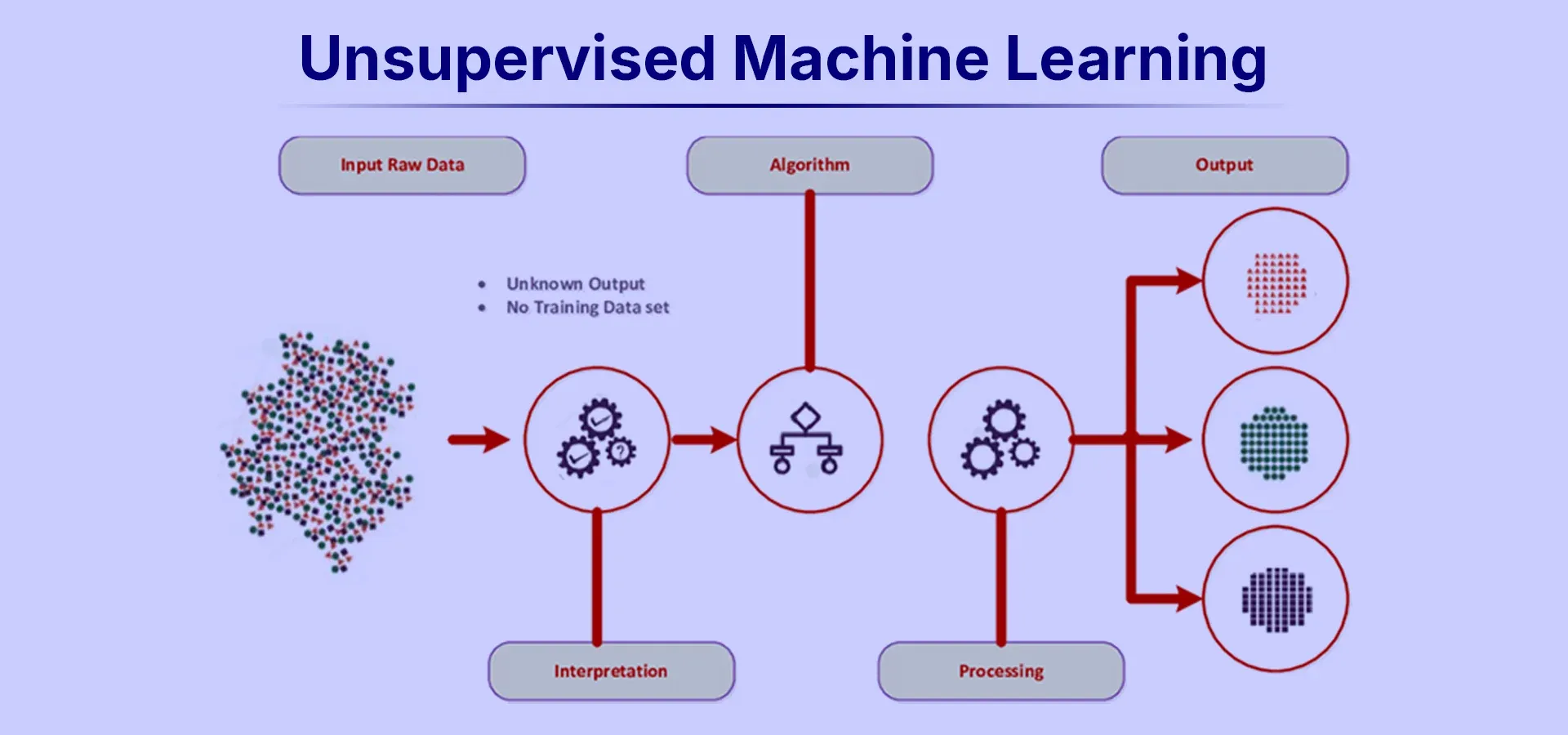
Categories of Unsupervised Machine Learning
- Clustering: Groups data points based on similarities. For example, segmenting customers into clusters for personalized marketing.
- Association: Identifies relationships between variables in large datasets, like figuring out which items often appear together in a shopping cart.
Both methods aim to learn from unstructured data, highlighting insights without any labeled guidance.
Advantages of Unsupervised Machine Learning
- Uncovers genuine data patterns without human bias.
- Often reveals surprising groupings or associations.
- Works well for exploratory data analysis or trend discovery.
- Useful when labeling data is impossible or too expensive.
- Can adapt to changing conditions since it isn’t tied to fixed labels.
Disadvantages of Unsupervised Machine Learning
- Interpreting results can be tricky.
- No clear “correct” answer makes validation difficult.
- Clusters or associations may not align with business objectives.
- Sensitive to how data is scaled or chosen.
- Results can be unstable if input parameters or algorithms change slightly.
3. Semi-Supervised Learning
Semi-supervised learning sits between supervised and unsupervised approaches. It uses a small set of labeled data and a larger set of unlabeled data. The model gleans structure from unlabeled examples while fine-tuning accuracy with the labeled ones. This method is handy when labels are scarce but unlabeled data is abundant, such as in speech recognition or photo tagging. It’s like having a few fully solved puzzles and many random pieces scattered around. You still learn patterns but get an extra boost from partial guidance.
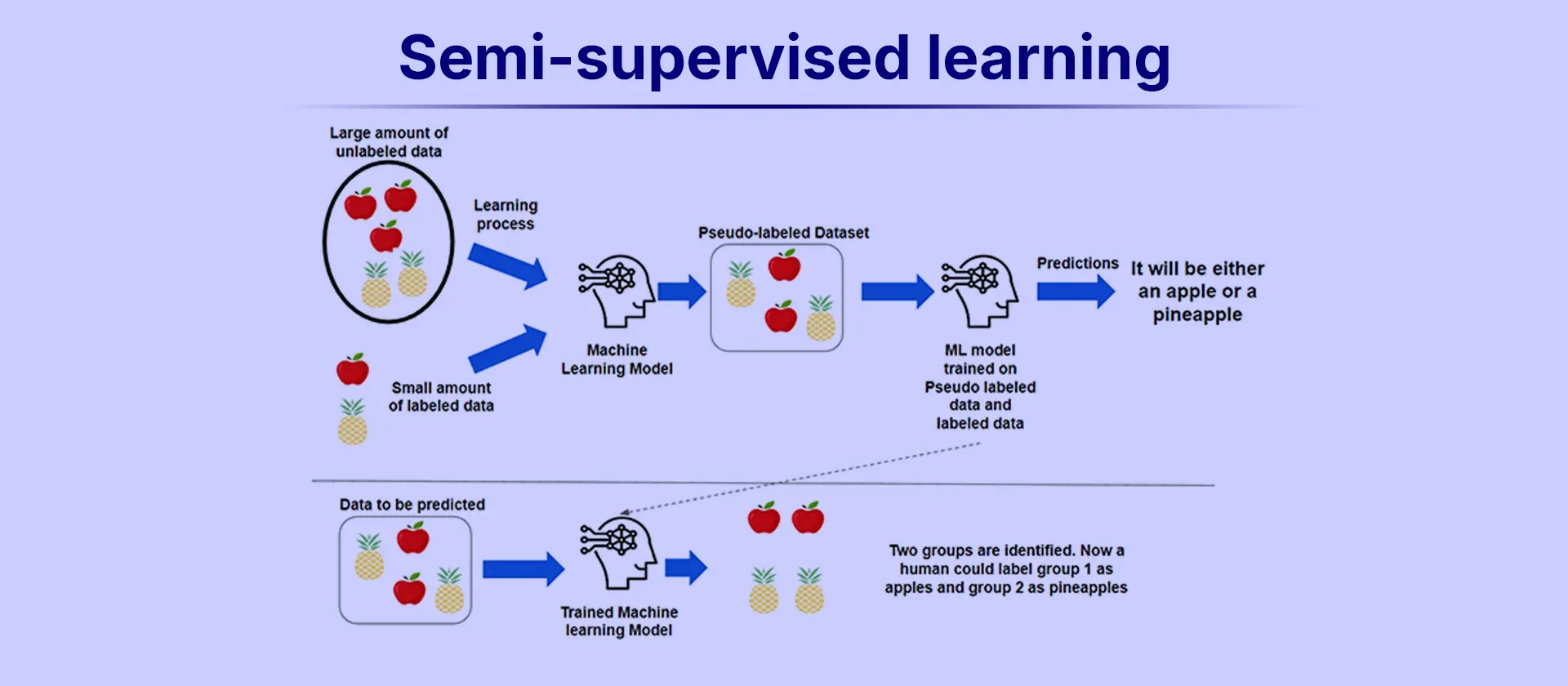
Types of Semi-Supervised Learning Methods
- Graph-based semi-supervised learning: Constructs graphs linking similar data points, spreading label information through connected nodes.
- Label propagation: Moves labels from known instances to nearby unlabeled examples.
- Co-training: Two separate models train each other using their best-labeled guesses.
- Self-training: The model repeatedly re-trains on its own high-confidence predictions.
- Generative adversarial networks (GANs): Uses a generator and discriminator to refine representations, often bridging the gap between labeled and unlabeled data.
Advantages of Semi-Supervised Machine Learning
- Maximizes use of abundant unlabeled data.
- Reduces manual labeling costs.
- Often achieves higher accuracy than pure unsupervised learning.
- Flexible approach for tasks like text classification or image tagging.
- Can adapt quickly with minimal labeled examples, saving both money and time.
Disadvantages of Semi-Supervised Machine Learning
- Depends heavily on the quality of the small labeled set.
- Confident but incorrect predictions can mislead the model.
- Requires careful tuning to avoid compounding errors.
- Evaluating performance can be confusing if many labels remain unknown.
- Might struggle when unlabeled data is very diverse.
4. Reinforcement Machine Learning
Reinforcement learning is about teaching an agent to make decisions step by step by interacting with its surroundings. The agent takes an action, then gets a reward or a penalty based on the outcome. Over time, it learns through trial and error, finding the best strategies to maximize rewards in the long run. This method has led to big advancements in areas like game AI, robotics, and managing resources. It’s a bit like training a pet—you use treats to encourage good behavior and corrections to avoid mistakes. With enough practice, the agent learns the best way to act.
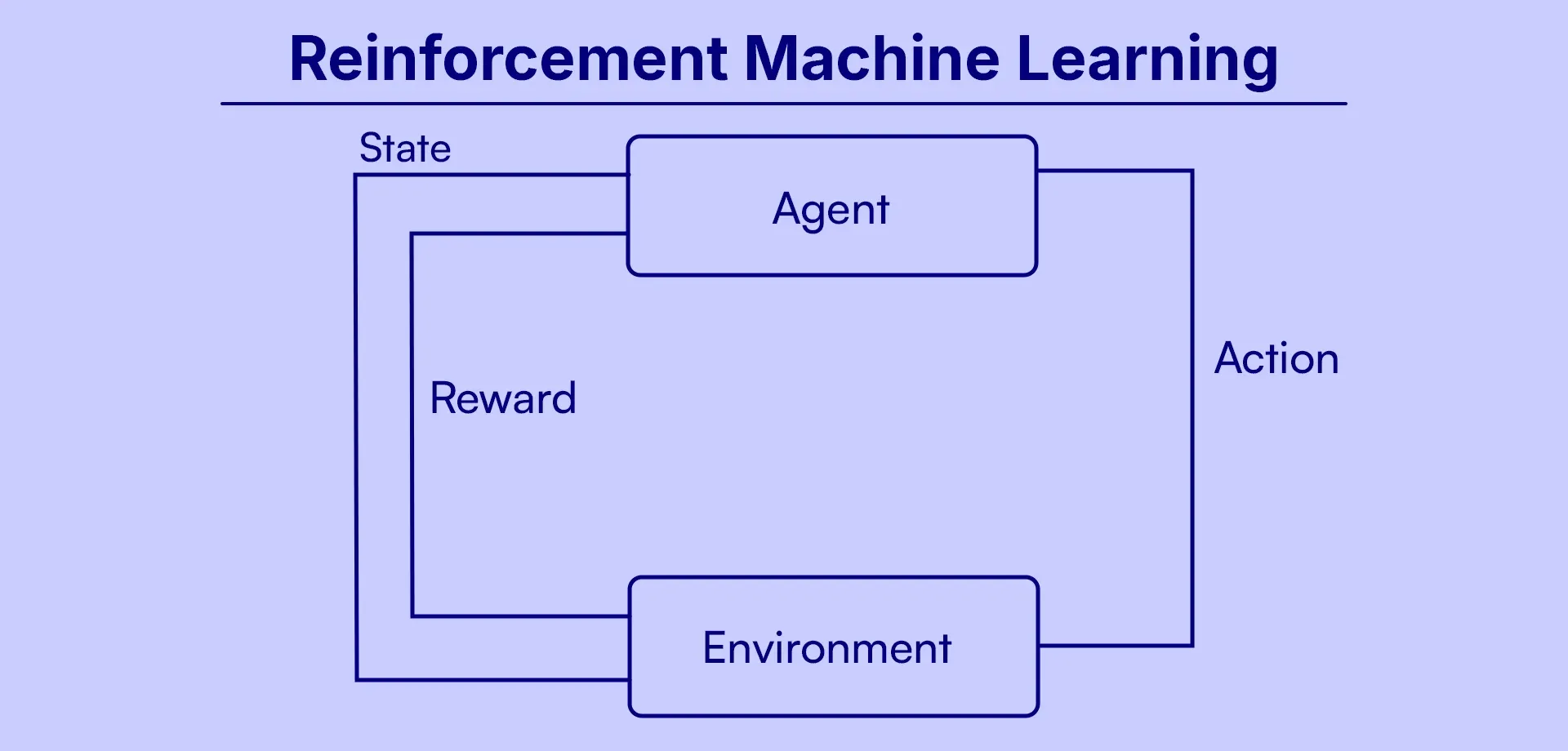
Categories of Reinforcement Learning
- Positive Reinforcement Learning: Rewards correct actions, increasing the likelihood they’ll be repeated.
- Negative Reinforcement Learning: Focuses on reducing undesirable actions through penalties.
Both methods shape behavior over time. Positive reinforcement tends to guide algorithms toward success, while negative reinforcement steers them away from failure. Balancing both can yield robust, adaptable models.
Real-World Use Cases of Reinforcement Learning
- Video Games- AI opponents learn winning tactics by adjusting moves based on rewards.
- Resource Management- Schedules tasks or allocates resources to minimize costs and optimize throughput in data centers.
- Robotics- Guides robots on handling objects, navigating obstacles, or even learning to walk.
- Text Mining- Helps chatbots refine conversational responses through user feedback loops.
In these areas, small improvements compound significantly, showcasing the power of an agent shaped by iterative reward-based learning strategies.
Advantages of Reinforcement Machine Learning
- Excels in dynamic environments where decisions matter.
- Enables sophisticated problem-solving without extensive labeled data.
- Learns from direct feedback loops, often becoming more efficient over time.
- Powerful for tasks with clear goals and real-time adaptability.
- Incentivizes creative solutions through exploration and reward optimization.
Disadvantages of Reinforcement Machine Learning
- Requires careful reward design to avoid unintended behaviors.
- Long training times and significant computational resources.
- Risk of overfitting to training scenarios.
- Implementation complexity is higher than supervised or unsupervised methods.
- Limited real-world data can lead to brittle policies that don’t generalize well.
Conclusion
Each of these types of machine learning has its role. Supervised methods thrive on well-labeled data. Unsupervised techniques discover hidden gems in unlabeled datasets. Semi-supervised combines both worlds, and reinforcement excels in dynamic tasks. If you want to automate your business with ML, consider contacting Rejoicehubllp for expert guidance.
Frequently Asked Questions
1. What’s the main difference between supervised and unsupervised learning?
Supervised learning use labeled data, whereas unsupervised learning deals with unlabeled datasets. In supervised methods, the model knows the target answers. Unsupervised methods let the model find patterns without explicit guidance.
2. When should I use semi-supervised learning?
Semi-supervised techniques are helpful when labeling data takes too much time or costs too much. If you have a small amount of labeled data but a lot of unlabeled data, these methods can help improve accuracy without the extra effort of labeling everything.
3. Why is reinforcement learning great for games?
Reinforcement learning excel at sequential decision-making. In games, each action leads to rewards or penalties. Over many iterations, the AI refines strategies to beat opponents or optimize scores.
4. Are there any risks with machine learning?
Yes. Biased data can lead to unfair predictions. Overfitting can hurt performance. Also, some models need vast computational power, which raises cost concerns.
5. How do I pick the right approach?
It depends on your data and goals. If you have many labels, supervised might work best. No labels? Go unsupervised. If you have partial labels, consider semi-supervised. For sequential decisions, try reinforcement methods.
